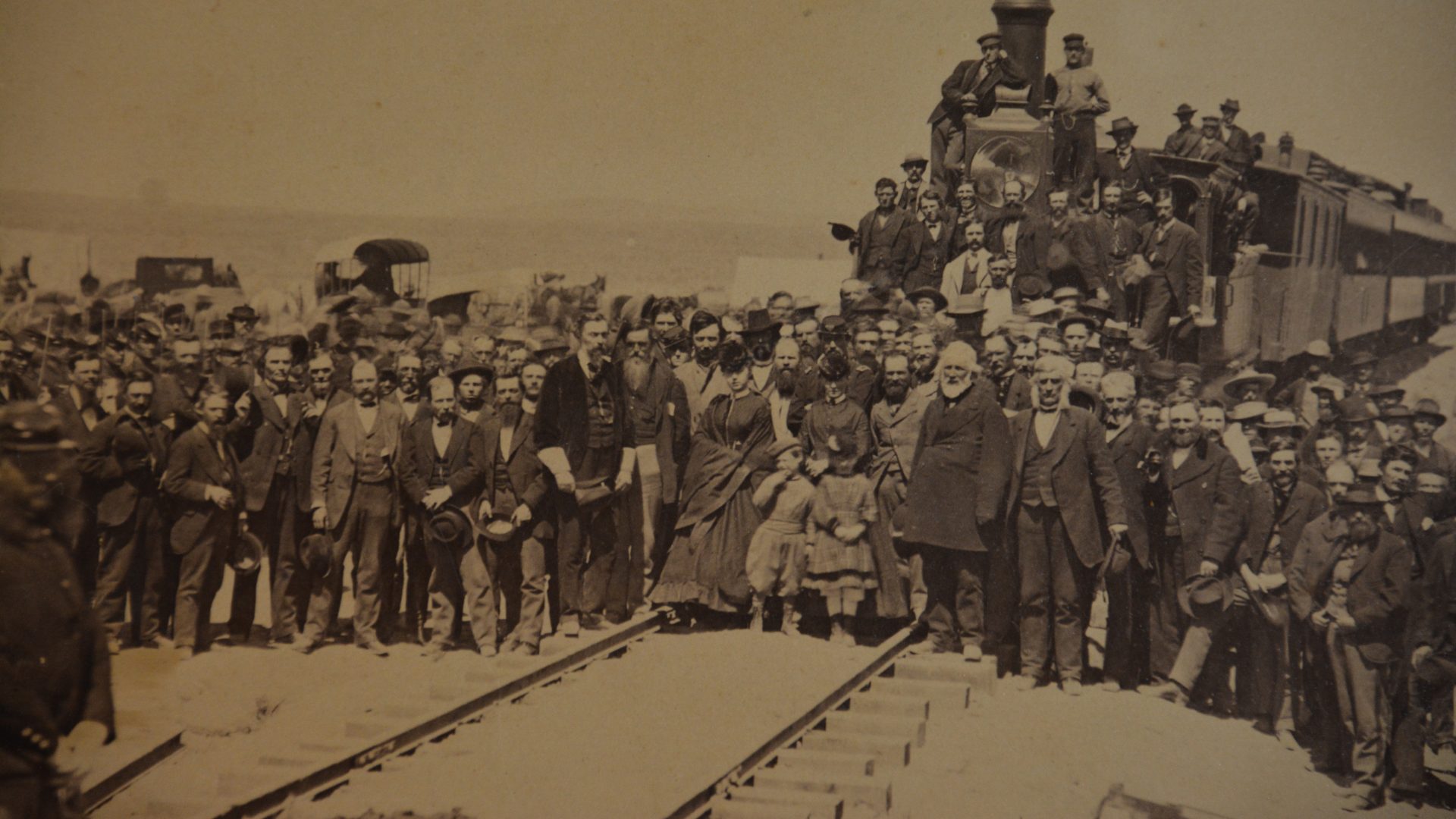The American West long presented a land of promise, though this potential seemed to grow infinitely as the 19th-century progressed. Indeed, the Mormon community, driven westward by religious intolerance, settled the “promised land” of the Great Salt Lake Valley in 1847. The allure of gold drew many westward two years later. Over the next two decades, people continued to migrate to the West, enticed by the promises of economic renewal in the Civil War’s aftermath. All the while, Native Americans increasingly found themselves confronted by encroachment on their lands.
In 1868, Andrew Russell traveled to the American West to photograph the progress of the Union Pacific Railroad and the Transcontinental Railroad. Interspersed with images of railroad trestles and work parties are the settlers of the West in their infinite variety. General Grant and Party at Fort Sanders shows pivotal military and political figures at a frontier outpost whose primary goal was the protection of settlers from Native American attacks. The rugged, wooden buildings and the smartly dressed figures, however, show the West as both a dangerous and suitably domestic place (Willumson 2013, 103). Similarly, Russell’s Mormon Family shows a rugged family of Mormon settlers. The figures seem to present an ideal picture of enterprising homesteaders, though the Mormon community at large would soon come under attack from political and religious opponents, dismantling the institution of Mormon polygamy.
Those political and religious opponents were members of a new wave of migration in this period. Pushing ever westward with the railroads were Irish, Scandinavian, Polish, German, Czech, and Russian immigrants seeking a better life outside of homelands. By 1875, the population of the Great Plains was between thirty and fifty percent foreign born, a higher concentration of immigrants than any other region in the United States at that time (Hine, 294). However, not all migrants came from overseas. Following the end of Reconstruction in 1877 and the collapse of Republican support in the South, African Americans looked to the West as potential lands for settlement. Unfortunately, the specter of racism and terror, typified by the Ku Klux Klan, continued to haunt the intrepid African American community on the frontier. O. C. Smith, whose family is the subject of a stereoscopic image in this collection, bore witness to such violence in Utah, writing in his diary, “There was a man shot and hung at Wasatch tonight. Reason given: he is a Damned [Expletive].” (Athearn, 86)
Even as the social and political strife intensified with increased settlement, images and conceptions of the American West continued to enrapture and inspire the American people. Photographs became more accessible during this period with the advent of mass production (Graalfs, 4-5). Two photos, Amphitheater at Black Butte Station and Distant View of Pulpit Rock, speak to the natural beauty and wonderment of the landscape of the West. However, the serenity of these images sharply contrasts with the rapid consolidation of industry and increase in violence of this period. Nevertheless, American audiences conceptualization of the West as a land of untamed beauty endured until the end of the 19th-century (Panzer, 12).






